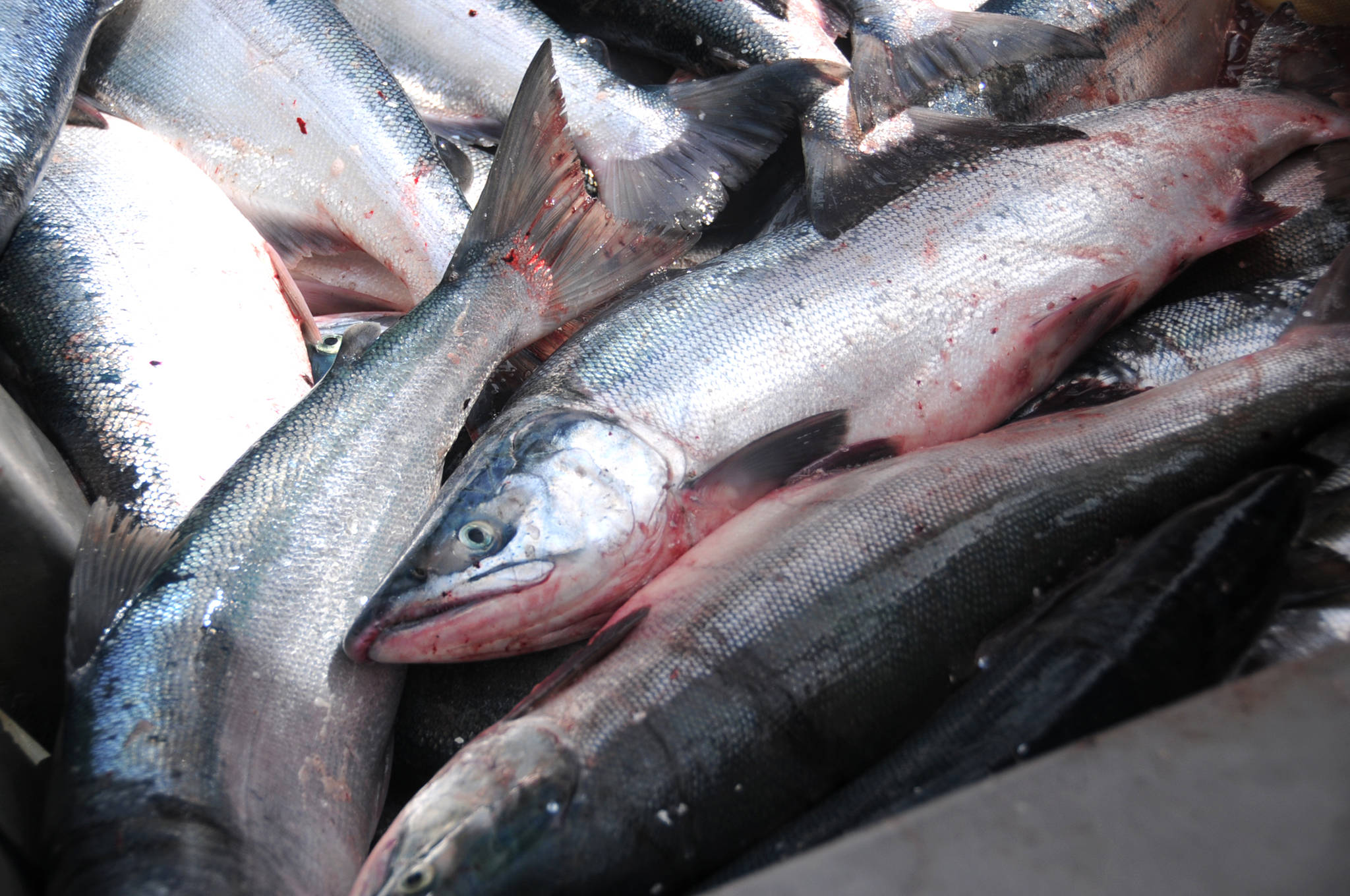Fishermen and seafood harvesters may take a major trade hit with the announcement of new tariffs from China, though the details still aren’t clear.
The country announced new tariffs on a broad cross-section of American seafood products on June 15 in response to a U.S tariff hike on imported Chinese products. If the tariffs are approved, China will apply a 25 percent tax to items like Pacific salmon, cod, Alaska pollock, flatfish, crab, shellfish and other commonly exported seafoods.
China is a major trade partner for the Alaskan seafood industry. Processors regularly ship salmon that have been headed and gutted to China to finish the processing and packaging before being re-exported to the rest of the world. China is also a major consumer of seafood products within its borders, and a 25 percent tariff could push down imports.
It’s possible the tariffs won’t be implemented at all, or there may be exceptions, said Garrett Evridge, an economist with the McDowell Group.
“At this point, there’s a lot of outstanding information that we’re still trying to get our fingers on,” he said. “It’s actually unclear as to whether re-exported seafood is going to be excluded.”
According to an announcement from the Alaska Seafood Marketing Institute, multiple contacts in China have indicated that customs officials would exclude products intended for reprocessing and export.
“It is not yet clear how product entering China will be differentiated between export and domestic consumption upon entry or at what point a tariff and/or credit will be applied,” the June 22 announcement states. “This is a developing situation and ASMI will continue to provide updates as information becomes available.”
The Alaska Seafood Marketing Institute has maintained a Chinese office in Hong Kong since 1997. On a recent trade mission to China, Gov. Bill Walker took several representatives of the seafood industry with him specifically to build relationships between Chinese and American companies for seafood trade.
Alaska Seafood Marketing Institute Communications Director Jeremy Woodrow said about 338,000 metric tons of Alaska seafood, worth about $789 million, was shipped to China in 2016. Much of that is intended for re-export, though it’s hard to say exactly how much.
“The China export numbers of Alaska seafood are difficult to track but is understood that over half of the Alaska seafood that is shipped to China is reprocessed and then exported,” he said in an email. “The remainder (less than half) is consumed in the China domestic market.”
Demand for high-quality, sustainable seafood has been increasing in China recently, Woodrow noted.
“The growing Chinese middle-class has also created more spending power, which has led to increased sales of Alaska seafood,” he said.
Evridge said Alaska exported about $988 million in seafood to China in 2017, about a third of which is Pacific salmon. Different species will be affected differently, and the industry is still trying to figure out the overall impact, he said. For example, halibut is mostly a domestic product and so may not be affected much by the Chinese tariff, he said.
“China is our most important export market as a state in terms of seafood,” he said. “We’re trying to figure out the actual impacts on species and fisheries in communities.”
In response to the announcement of the Chinese tariffs, Walker said in a June 18 press release that he would go to Washington, D.C. to “work directly with both sides” to protect Alaska’s trade interests.
“Alaska has abundant resources, from natural gas and seafood to beer and baby food,” he said. “These resources enable our state to dramatically reduce the trade deficit between the United States and China, if we can finalize agreements to increase exports of our products. Trade negotiations between leaders from both countries are ongoing. I am confident that we will, in the end, embrace the opportunity for mutual economic growth that we can achieve by working together.”
The seafood tariffs aren’t the only tax change likely to affect the fishing industry. In March, President Donald Trump’s administration announced a 25 percent tariff on imported steel and a 10 percent tariff on aluminum imports with exemptions for Canada and Mexico, aimed at helping the American steel and aluminum industry. Both metals are commonly used in boat repair and fabrication.
For businesses that make and repair boats, that’s a pass-along tax, said Donnelle Scott, the owner of RAW Welding in Soldotna. He said his business works on both sport and commercial fishing boats and has already worked on about 15 in the last month as fishermen get ready for the height of the season.
“(The tariff) increases the cost of material,” he said. “I just directly take the cost from what it is and give it to them. Really when it comes to the commercial fishing guys, they’re not too worried about it. They try to use their scrap.”
Scott Hammond, the owner of Metal Magic in North Kenai, said the increased cost of the metal will likely be painful for people, but that it costs what it costs and prices always rise.
“There really isn’t any other option than doing it or not doing it,” he said. “Things just got more expensive, and they have to make a decision on whether or not they’re going to do it.”
He said things are likely to get more expensive for awhile as American manufacturers rework factories and try to get online but that he thought it was the right move in the long run.
“I think ultimately it’s what’s best for the country,” he said, “It’s going to be painful for a lot of people, but bringing an industry back to America is a good thing and needs to happen.”
Reach Elizabeth Earl at eearl@peninsulaclarion.com.

